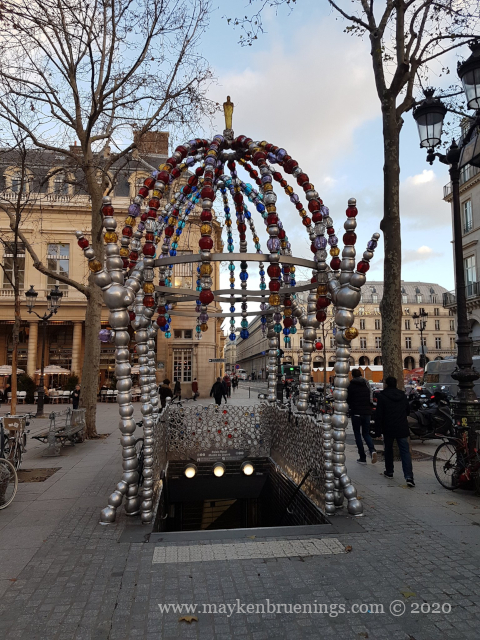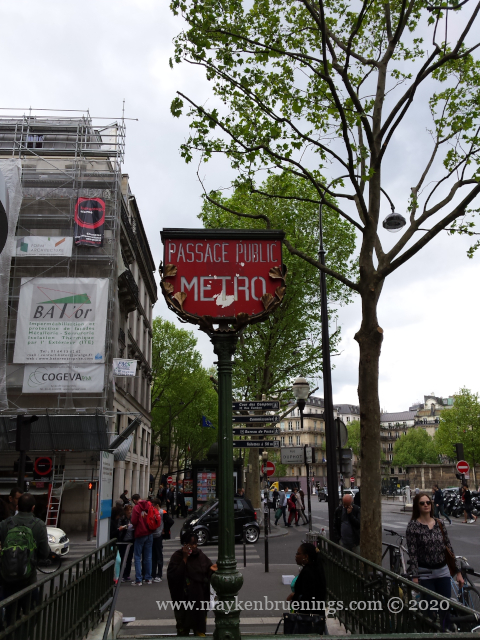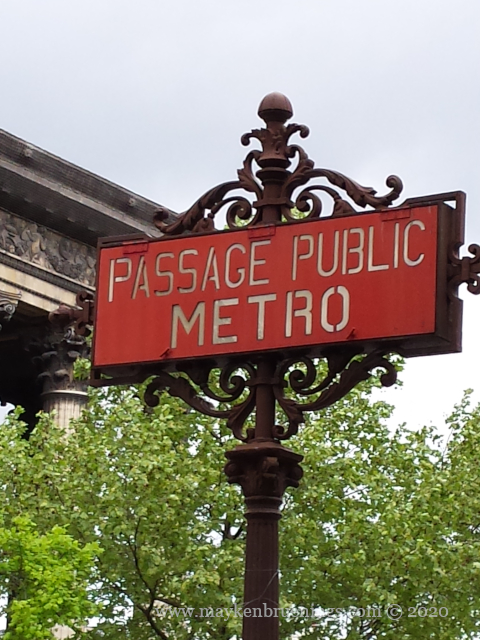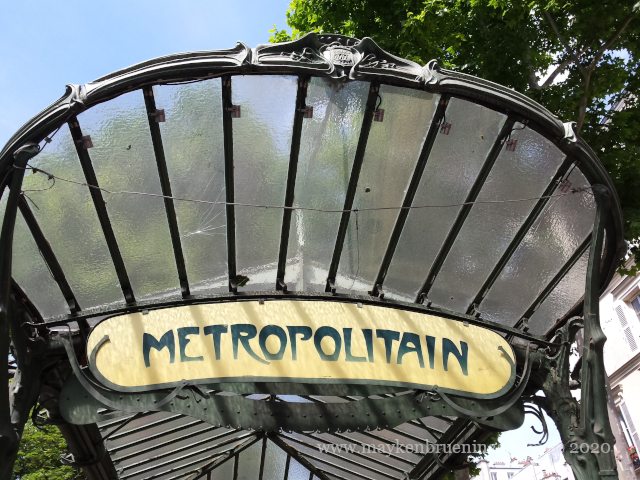
When Paris decided it needed an underground train network, the Compagnie du Chemin de Fer Métropolitain de Paris, the metropolitan train company of Paris, was founded. It later bought up other smaller companies and incorporated their lines into its network, all under the name Métropolitain.
Unlike other big cities which have a certain uniformity in their underground/subway signage, Paris has various different signs signalling an entrance to the below-ground transport network.
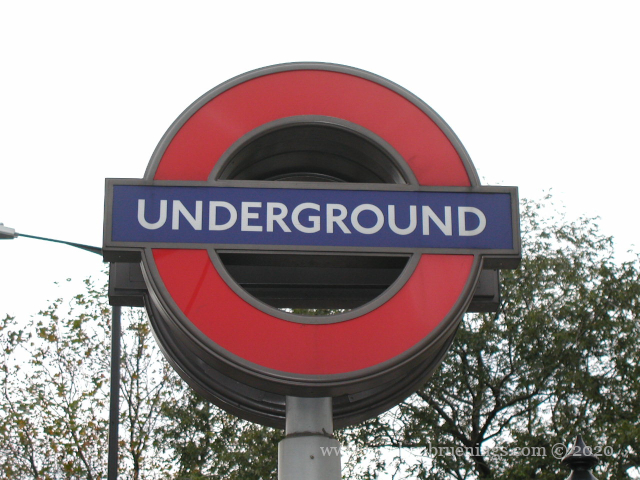
It all started with the Société Nord-Sud, whose initials can still be seen in the frames of some billboards on the platforms.
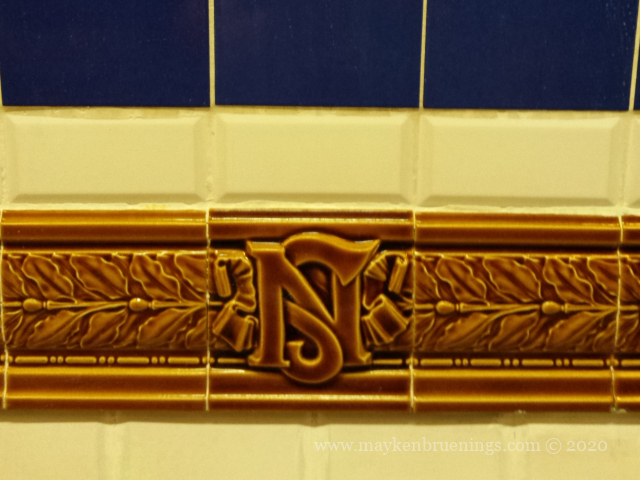
Nord-Sud built and ran three metro lines in the early 20th century before being bought up by the Compagnie du Chemin de Fer Métropolitain de Paris
The most famous entrance signs are those created by Hector Guimard in Art Nouveau style. There were two different types, with and without a glass roof. Of the former, only two remain today, at the stations Porte Dauphine and Abbesses.
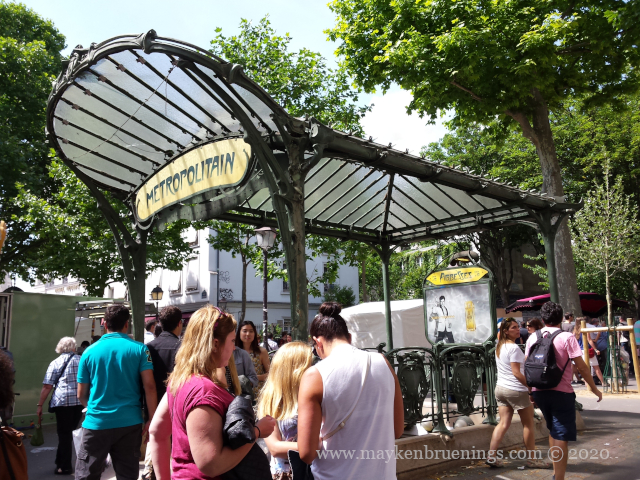
The roof-less type is quite numerous and can be found all across town.







This type was given to other cities around the world, such as Mexico City, Chicago, Lisbon, or Moscow. These are all copies, though, the only original one was given to Montreal at the occasion of the World Fair in 1867. It can be found at the station Square Victoria.
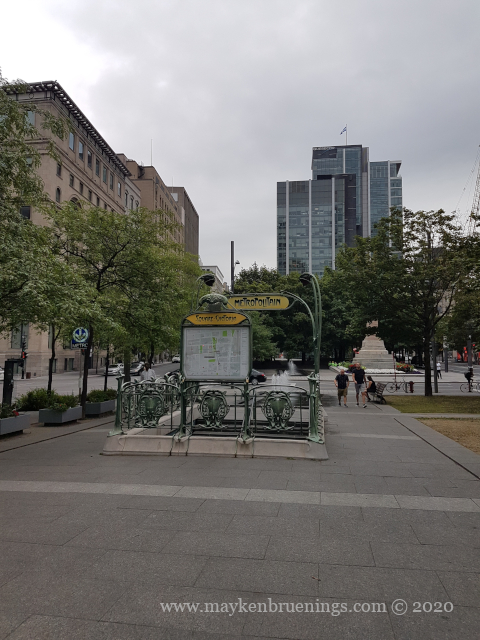
The 1920s saw the introduction of totem sign, first more elaborate
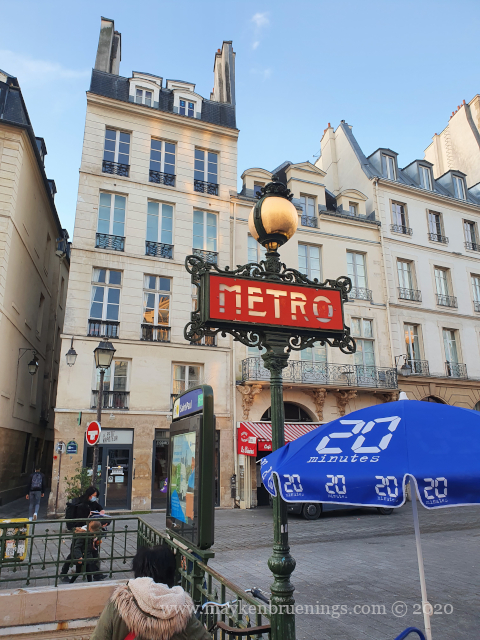
then simpler:
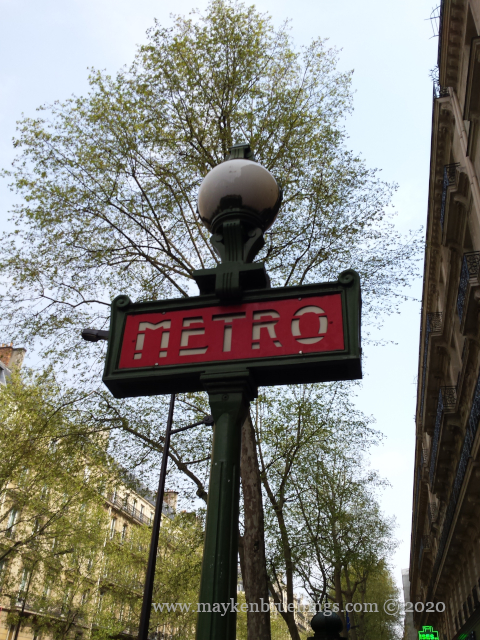
At Madeleine station, the totem signals a metro entrance that doubles as an underground passage.
A few stations have particular entrances, such as Vaneau.
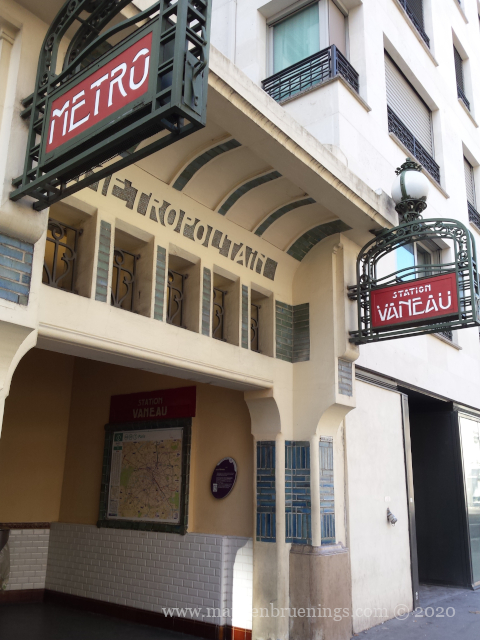
The most easily visible sign, however, might be the unadorned yellow M, dating from the 1070s. Not to be confused with another yellow M, it is surrounded by a steel circle and illuminated from the inside at night.
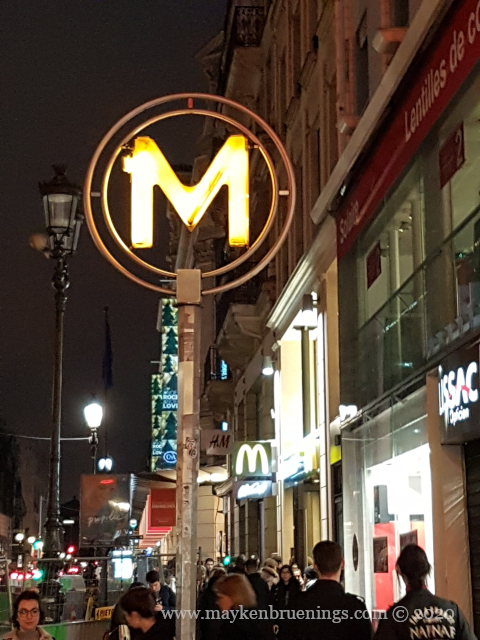
And would you believe that this is a métro entrance? It is indeed, at the station Palais Royal. The kiosque des noctambules, the night-owls’ booth, was created by an artist and set up in the year 2000.
